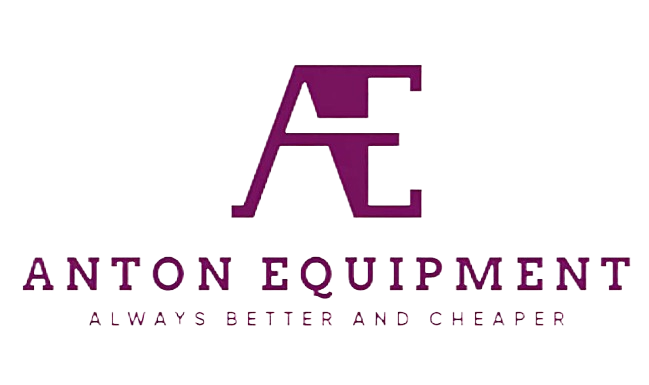News
Balancing Power and Precision in Skid Steer Loader Implements
Core Principles of Power-Precision Balance in Skid Steer Operations
Hydraulic System Dynamics for Optimal Performance
Understanding hydraulic system dynamics is essential for optimizing skid steer operations. The hydraulic systems in skid steers work by using pump capacities and pressure settings that influence power delivery and precision. For efficient task execution, maintaining proper hydraulic fluid viscosity and temperature is critical. This ensures consistent performance across various operations by minimizing resistance in the fluid flow. Typically, hydraulic systems in skid steers have flow rates ranging from 15 to 30 gallons per minute, which enhances both efficiency and speed during operations. By adjusting these parameters, operators can ensure their machinery's power output is both robust and precise, catering to the specific demands of diverse tasks.
Attachment Weight Distribution Strategies
Achieving balanced operations in skid steers heavily relies on effective attachment weight distribution. The importance of weight distribution cannot be understated, especially in maintaining a stable center of gravity to prevent tipping or instability. Strategies to optimize this include selecting attachments that distribute weight evenly across the skid steer's axles. Utilizing well-balanced attachments not only ensures operational efficiency but also minimizes wear on machinery. According to experts, improper weight distribution can lead to premature mechanical wear and reduced efficacy in task performance. Therefore, attention to weight management is crucial for prolonging the equipment's lifespan and maximizing productivity.
Quick Coupler Impact on Task Efficiency
The integration of quick couplers significantly enhances task efficiency on job sites by allowing for the rapid change of skid steer attachments. This innovation means attachments can be switched out swiftly, minimizing downtime and increasing job site productivity by as much as 25%. High-quality quick couplers contribute to greater safety and reduced maintenance needs, offering operators a user-friendly and dependable tool. Industry data highlights a 25% faster average time for attachment changes when using quick couplers, showcasing their impact on improving task efficiency. This capability empowers operators to handle multiple tasks seamlessly, adapting quickly to varied operational demands.
Selecting Attachments for Combined Strength and Accuracy
Evaluating Mini Excavator Attachments vs Skid Steer Tools
When considering equipment for construction or landscaping projects, evaluating the differences between mini excavator attachments and skid steer tools is pivotal. Each offers distinct advantages, with mini excavator attachments excelling in tasks like trenching and excavation thanks to their precise maneuverability and digging capabilities. Conversely, skid steer tools are robust for material handling and surface preparation, demonstrating their strength in tasks such as loading and clearing. A comparative analysis reveals that while mini excavators provide unmatched precision in confined spaces, skid steers deliver sheer power for heavy lifting tasks. Operators often emphasize reliability and task suitability, highlighting the effectiveness of mini excavators for precision tasks and skid steers for strength-oriented assignments.
Snow Pusher/Sweeper Applications in Precision Work
Snow pushers and sweepers enhance the efficiency of maintaining clean work environments during the snowy season. These attachments are essential for swiftly removing snow from driveways, parking lots, and roads, ensuring safety and accessibility. Precision control is critical in these operations, where advanced attachments and operator training play vital roles. High-quality snow pushers and sweepers enable operators to perform precise movements, reducing the risk of property damage. Statistics support these tools' effectiveness, showing significant efficiency increases in snow removal tasks when compared to traditional methods, enhancing overall worksite productivity.
Material-Specific Bucket Modifications
Material-specific modifications in buckets greatly enhance operational efficiency and productivity in construction sites. Different materials like soil, gravel, and asphalt demand unique bucket specifications to achieve optimal performance. Adjustable cutting edges can be tailored to different materials, and reinforced sides offer durability against heavy loads. Design modifications, such as variable cutting angles, allow for efficient adaptation to granular or solid materials, thereby improving performance. Evidence has shown that custom buckets enhance productivity rates, making them vital for projects involving diverse material types. This customization is crucial in streamlining operations and reducing wear and tear on machinery.
Technological Advancements Enhancing Implement Capabilities
Smart Hydraulic Flow Control Systems
Smart hydraulic flow control systems represent a significant leap forward in enhancing the operational efficiency and precision of equipment. These systems automatically adjust hydraulic flow based on load demands and operator inputs, ensuring optimal performance for various tasks. Key features such as automated flow adjustments allow for precise control with minimal manual intervention. For instance, by optimizing hydraulic pressure according to the task, these systems help reduce fuel consumption and increase productivity. Data from fleets utilizing smart hydraulic systems shows notable efficiency improvements and operational cost reductions, underscoring their value in modern machinery.
Laser-Guided Grading Accessories
Laser-guided grading systems have revolutionized the process of achieving precise grading outcomes in construction and landscaping. By providing real-time feedback and control, these systems significantly reduce human error, leading to faster and more accurate grading tasks. The implementation of laser-guided technology enables operators to achieve a level of precision that was previously difficult to attain manually. As reported in several studies, operations utilizing laser-guided systems have experienced substantial time savings and improved accuracy rates, making them invaluable for anyone looking to enhance precision grading operations.
Attachment-Specific Pressure Monitoring
Monitoring hydraulic pressure tailored to each type of attachment is crucial for maintaining optimal performance and extending equipment life. Advanced pressure monitoring technologies provide real-time data feedback, allowing operators to adjust settings promptly to avoid overstressing machinery. This kind of intelligent monitoring ensures that attachments are used within their optimal pressure ranges, reducing wear and tear and enhancing the longevity of both the equipment and attachments. Proper pressure management not only minimizes maintenance and repair costs but also boosts reliability and productivity in demanding environments.
Operational Techniques for Maintaining Balance
Counterweight Configuration Best Practices
Counterweight configuration is essential for maintaining balance during varied skid steer operations. Proper counterweight placement significantly affects machine stability and load handling capabilities, ensuring efficient function and operator safety. Expert recommendations emphasize aligning counterweights with the specific demands of attachments like skid steer attachments or snow sweepers to maintain stability. This tailored approach allows for effective handling of different loads and optimizes performance during tasks like snow pusher operations. By adhering to such practices, operators can enhance machine reliability across diverse operating conditions.
Surface Adaptation Through Track Systems
Different track systems can be adapted for various surfaces to enhance traction and stability, crucial for operational efficiency. Proper surface adaptation minimizes risks associated with unstable ground and improves performance by ensuring the equipment firmly grips the terrain. Studies show that integrating adaptive track systems in mini excavator attachments significantly boosts efficiency. These systems allow for seamless transitions across varying conditions, from muddy fields to asphalt surfaces, enhancing productivity and safety during complex operations.
Precision Grading with Tiltrotator Attachments
Tiltrotator attachments enable enhanced precision in grading tasks by supporting multi-directional operations. These versatile tools allow operators to execute efficient grading even in slopes and tight spaces, making them invaluable for construction projects. The capability to manipulate quick coupler equipped tiltrotators for precision grading has been highlighted in case studies, demonstrating improvements in work quality. By allowing nuanced control, tiltrotators reduce the need for multiple maneuvers, streamlining tasks and boosting overall project accuracy.












































